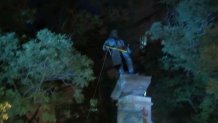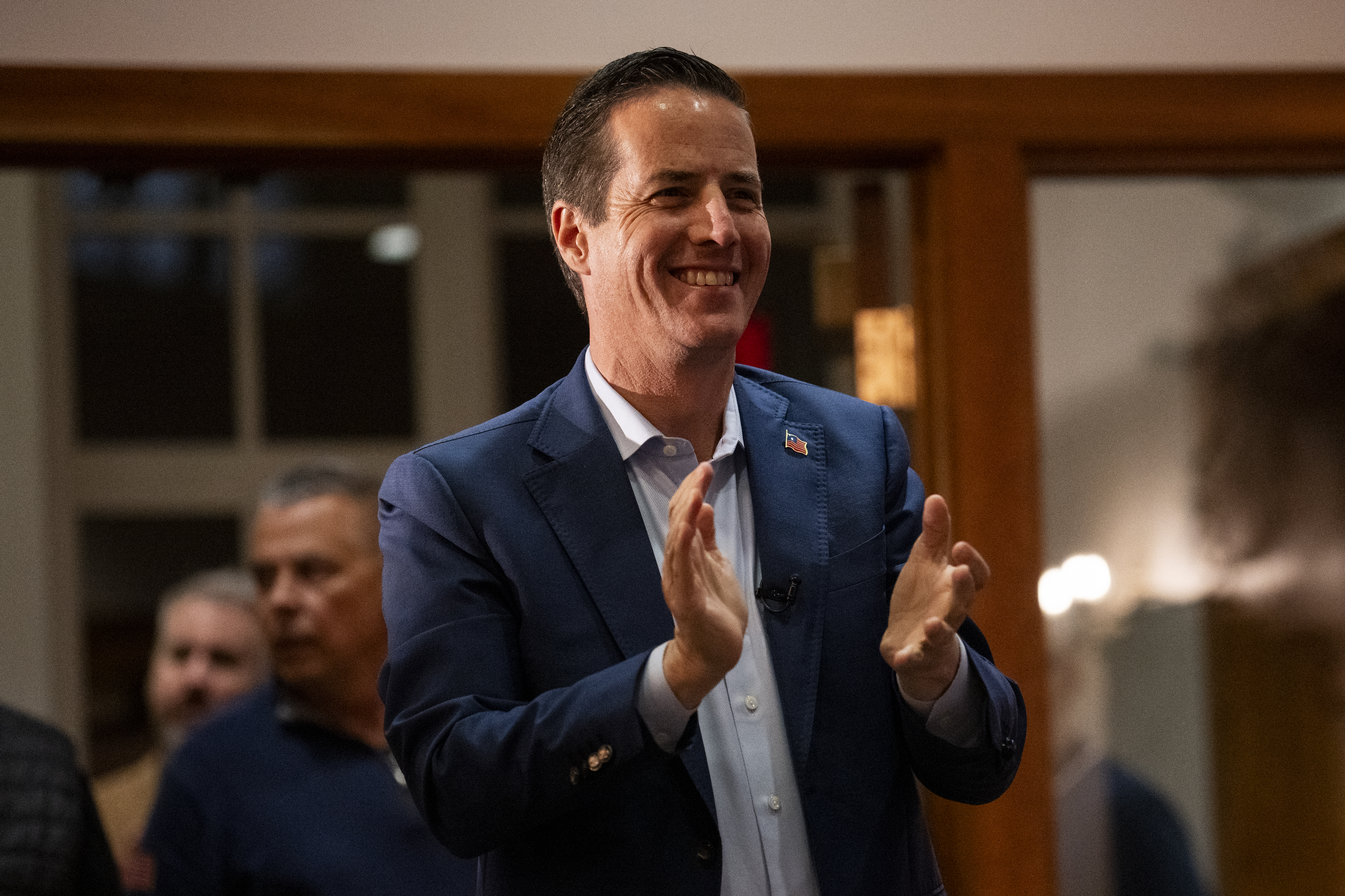Demonstrators toppled a statue of Confederate Gen. Albert Pike near D.C. police headquarters and set it on fire late Friday.
The demonstrators wrapped two ropes around the statue to pull it down.
The statue was then doused with lighter fluid and set on fire on live TV.
Police remained outside Metropolitan Police Department headquarters as the statue burned for several minutes. Then a group of about a dozen officers approached and put the fire out with a fire extinguishers.
The officers then returned to headquarters without clashing with the demonstrators.
President Donald Trump tweeted that police were not doing their job.
The group that toppled the statue was not part of earlier Juneteenth rallies and marches.
U.S. & World
News from around the country and around the globe
The statue of Pike is one of 19 Confederate statues in the D.C. metro area.
The statue is located near 3rd and D streets NW and honors Pike as an author, poet and philanthropist.

Eleanor Holmes Norton, D.C.'s delegate to the U.S. House of Representatives, introduced a bill seeking the statue's removal in October 2017, but it stalled after being handed off to the Subcommittee on Federal Lands. She reintroduced the bill last summer.
Norton said the statue, a nearly 30-foot structure with an 11-foot bronze cast of Pike on federal land, was never authorized by the District.
The Freemasons, of which Pike was a part, donated most of the money to dedicate the statue in 1901, Norton said. Pike served as the head of the Scottish Rite of Freemasonry for more than three decades, said the organization’s grand historian, Arturo de Hoyos.
De Hoyos contested Norton’s claim that soldiers under Pike’s command mutilated bodies of Union soldiers, saying Native American troops acted of their own accord.
In a handwritten account provided be de Hoyos, Pike said he felt “angry and disgusted” when he learned that a Union soldier had been scalped after his death.

De Hoyos also said the statue does not represent Pike as a Confederate soldier, but rather a private citizen.
Ultimately, de Hoyos gave his blessing to remove the statue.
Norton recommended moving the Confederate statue to a museum rather than tearing it down. “Americans must continue to learn from history,” she said.



